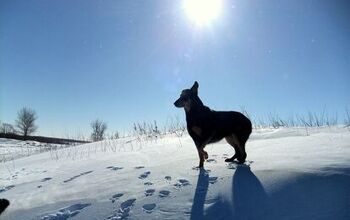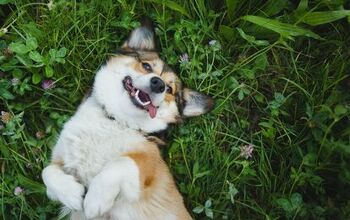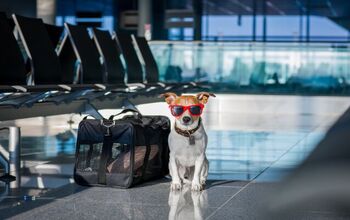How To Keep Your Senior Dog Active

Sure, your dog’s Agility days might be behind him, and the gravity-defying tricks he used to perform are no longer in his repertoire. Still, there is a long list of activities perfectly suited to older dogs, to ensure his golden years are his best years.
Sports for Seniors
There are several sports that don’t demand much of your senior dog’s body. Even if you don’t live near a training facility that offers sport classes, there are online schools that allow you to learn and practice at home.
Rally Obedience (also called Rally-O or simply Rally) is a lighter version of competition obedience, and a great way for you and your dog to spend time training together. Rally involves you and your pooch performing a series of obedience-type tasks, laid out on a course. The tasks include lots of heelwork, sits, stays, and so on. Rally is perfect for older dogs because it provides lots of mental stimulation, but at a slow pace. Even at Rally trials, there is a division just for seniors, and exceptions can be made for dogs with disabilities.
Scent Work is another sport with no age limit. Even blind or disabled dogs can effectively sniff out a scent. Unlike Rally, which relies on frequent cues from the handler, Scent Work is an activity that dogs do largely on their own. The handler is there to help and observe but should not interfere with the dog’s search. As such, dogs with an independent streak may find this sport irresistible.
While not a competitive sport in itself, swimming is a safe way to keep many older dogs fit. As with humans, dogs can get a great workout swimming without the negative impact (literally) from running. Get the green light from your vet and ensure your dog actually enjoys water before embarking on a swimming adventure.
Training
Senior-friendly training can take many forms. In all cases, keep it positive and fun.
Free-shaping is an excellent activity for a dog with either full or limited physical abilities. With free shaping, you place a novel object, such as a cardboard box or empty plastic container, a few feet away from your dog. Any time your dog interacts with it, you will click with a clicker and give a treat. After some time, your dog will get the hang of it, intentionally approaching the item to see if it earns him a click (which it will). You’ll then see your dog start to offer more deliberate behaviors: touching the item with his nose, pushing it with his paw, stepping inside it, and so on. What makes this activity good for seniors is the dog’s ability to choose his interaction. If he has trouble with mobility, he can touch or pick up the object with his mouth. Or if he’s only got one tooth left, he can use his paws to push with it. The game is whatever you and our dog make it.
At the first sign of vision or hearing loss, revisit some modified basic training with your senior. For example, recall (“come”) is an essential skill, but hard for deaf or blind dogs to respond to. Consider a loud auditory cue, such as a whistle, in addition to a more noticeable visual cue, such as blinking a small flashlight on and off.
Beat boredom
As their senses dull and mobility becomes limited, seniors can become bored and depressed. Help them make the most of their plentiful free time by feeding in a food-dispensing toy, or by turning mealtime into training time. This will break up the monotony of the day, get his mind and body engaged, and even create more motivation to eat.
Consider learning fitness exercises to help your dog retain his muscle, balance, and mobility. You can either find a professional in your area who specializes in canine fitness, or follow instructions from print or online sources, with the permission of your vet.
While the senior years aren’t without their challenges, it’s a time full of opportunities to bond, play, and learn with your dog in new ways.

Kate Naito, CPDT-KA, is a dog trainer at Doggie Academy in Brooklyn, NY, and author of the training book, "BKLN Manners." She draws upon her experience as an educator and dog trainer to apply positive training techniques to a challenging urban environment. Kate is a rescue advocate drawn to special-needs dogs and currently has two Chihuahua mixes, Batman and Beans.
More by Kate Naito























